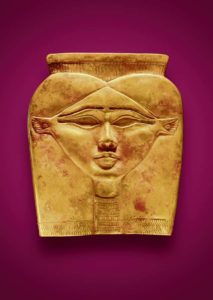Courtesy of Völklinger Hütte
A visit to the World Cultural Heritage Site Völklingen Ironworks is an adventure: the visitor can go down deep into the dark corridors of the burden shed and climb up to the lofty heights of the blast furnace viewing-platform.

The multi-media introduction to the sintering-plant takes the visitor on a journey through time, from the beginnings of the Völklingen Ironworks right up to the present day. From the roof of the ore shed, a view opens up over the town of Völklingen and the active works of Saarstahl AG. An impressive panorama at any time of year, both by night and by day.
At the granulating-plant, the laid out picnic area, located between colourful aquatic plants and uncompromising steel offers visitors a chance to relax. Then there is the ascent to the top platform 27 metres above ground: where the raw materials were once tipped into the blast furnaces. If anyone feels like going up a little further, they can climb up to the viewing-platform of the blast furnace group from which an incomparable panorama can be seen.
The top platform, spanning a length of 200 metres is now open to visitors: altogether an impressive experience. The tour continues by walking via the coal track, with its new 20 metre long spiral chute, over the blower shed footbridge into the blower shed. Here the blowers can be seen: giants of iron and steel which generated the blast that was then channelled into the blast furnaces.
A tour of the World Cultural Heritage Site, with more than 7,000 metres of exciting and well signposted walkways will generally take between two and three hours.
Editor’s note: The opening of the exhibition “Pharaohs-Gold – 3,000 years of ancient Egyptian high culture” will start May 18.
Opening hours until November 3, are 10 a.m. to 7 p.m. Admission fee is Euro 17. Children, youth under 18, and students up to 27-years-old with students’ ID card are admitted free.
For more information visit www.voelklinger-huette.org.
3,000 years of Egyptian high culture exhibit at Völklinger Hütte
Courtesy of Völklinger Hütte
Twenty-five years ago, in December 1994, the Völklinger Hütte became the first industrial monument listed in the United nations Educational, Scientific, and Cultural Organization’s list of world heritage sites. During this anniversary year, the site offers a variety of exciting projects. From May 18 through Nov. 24, visitors get to discover the world of ancient Egyptian high culture. More than 150 masterpieces are displayed, some of them for the first time.

The exhibition “Pharaohs-Gold – 3,000 years of ancient Egyptian high culture” shows outstanding gold treasures. For the ancient Egyptians gold had an exceptionally large religious and symbolic strength, and was the symbol of eternity and the holiest metal. They therefore referred to gold as the flesh of the gods, as it isn’t transient and non-destructible.
Ramses II, Tutankhamun, Echnaton and Nofretete, are names of Egyptian pharaohs that still fuel our imagination to this day. The fascination of the pharaohs includes pyramids such as the Chephr-Pyramid and legendary tombs and gold treasures such as those of Tutankhamun. The pharaohs were at the center of ancient Egyptian culture and descended from the gods according to ancient Egyptian ideas.
The ancient Egyptians wished for eternal life which gold was the symbol for. One of the most fascinating notions of ancient Egyptian mythology is the “night drive” of the sun god Re, who embarked on a journey through the night kingdom, to be reborn the next morning at sunrise. On earth, in the faith of the ancient Egyptians, the pharaohs ensured the order and balance of the world and thus held the world together at its core. The burial objects made of gold were supposed to make the pharaohs immortal.
The gold exhibits talk about the world of gods and the imaginary world of the Egyptians. Ancient Egyptian gold must be understood in its original meaning as sacred material filled with magical protection, which accompanied kings and other dignitaries in this world and beyond. For ancient Egyptians, the magic of gold was based not on material value, but on the symbolic strength of gold that kings, princesses or court officials wore in life as jewelry and which they were buried with.
Many gold treasures were lost to looting, and yet the preserved gold treasures give a comprehensive impression of the highly developed capability of ancient Egyptian gold workers and jewelers. Above all, however, the gold of the pharaohs is an expression of a world of faith that continues to fascinate to this day.
Opening hours until November 3, are 10 a.m. to 7 p.m. Admission fee is 17 Euro. Children, youth under 18, and students up to 27-years-old with students’ ID card are admitted free.
For more information visit www.voelklinger-huette.org.







